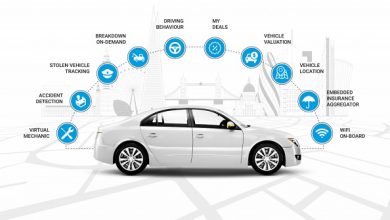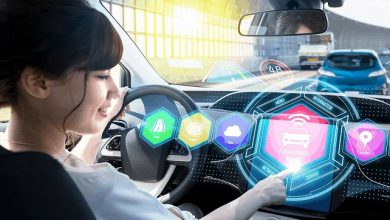miRoamer on the opportunities and challenges of Internet Radio for the connected car
With outdated hardware and operating systems, many late-model vehicles simply cannot cope with the demands of streaming media (including Internet radio). Small buffer sizes, inadequate processing power, unsupported codecs; these all create problems with quality of service and useability.
George Parthimos, CEO | miRoamer

The connected car market is really starting to gather momentum. If you believe the statistics from the GSMA, up to 140 million vehicles will be connected to the Internet within 4 years, rising to 600 million by 2025.
The whole concept of the “Internet of Things” is finding its way into our cars, with automakers feverously working on making it easy to access content and service in a product which has for decades been protected by a conservative and risk-averse culture. With lead times for production vehicles often reaching 7 years (or more), it’s fair to say automakers take baby steps to ensure they select the right services which will create the lowest impact and highest take-up.
A far cry from the turnaround of a new consumer electronics product, which can be spun in a few short months!
That’s part of the problem facing automakers; people expect their cars’ infotainment systems to perform the same way as their mobile devices. But more on that later.
Radio has been in the car for 100 years, is a passive medium, and continues to represent a significant in-vehicle engagement. Over the past few years Internet radio has steadily grown in both audience numbers as well as listening duration.
So what are the challenges with Internet radio in the car? Well, the first obvious one is quality of service. Those of us who use any form of streaming media know about the dreaded “buffering” issue, where either network congestion or poor service leadto agonising delays in consuming content. These issues become magnified when you’re consuming streaming media in a moving vehicle. Network “blackspots” and lack of 3G/4G coverage are the two biggest contributors to unsatisfactory quality of service in the car.
This is a particular area of interest for us. My team have been working for several years on cloud-based live stream transcoding services to solve the problem. By reducing the size and type of packets sent to the vehicle, the vehicle needs a lower bandwidth to provide continuous streaming. It also reduces the connected vehicle owner’s monthly data usage.
The initial service was first tested several years ago in India, known for its fragmented mobile network services (especially data). Back then, our team managed to get our miRoamer Android app to work across 2G networks at speeds as low as 16kbps. Since then. We’ve made significant progress in this field and are probably one of the leaders in this sort of technology.
There remain a number of challenges before the solution can be commercialised, such as content rights issues with the respective content owners and radio station operators, but our engineers proved that not only can it be done, but it also works really well and solves a major problem.
Another challenge facing Internet radio in the car is driver distraction, which is one of the most important categories for automakers. They take safety very seriously, and spend months (if not years) ensuring that whatever appears in the dashboard meets their very strict requirements. With aggregated radio services like miRoamer, there are literally tens of thousands of Internet radio stations to select. Traversing deep Country/State/City menus is a huge no-no whilst you’re driving, and so restrictions are often applied when the vehicle is in motion.
Hardware procurement timelines are also an issue for automakers. Typically, procurement of hardware can take many months (if not years), let alone the extensive driver testing and iteration cycles needed to certify the hardware as “production-ready”. So, the chips and memory sitting behind your shinny new car’s dashboard was probably specified and procured many years ago.
As a comparison, think of what your smartphone can do today compared to a few years ago. Technology changes quickly, but automakers simply cannot move that fast.
With outdated hardware and operating systems, many late-model vehicles simply cannot cope with the demands of streaming media (including Internet radio). Small buffer sizes, inadequate processing power, unsupported codecs; these all create problems with quality of service and useability.
Recently both Google and Apple announced their respective “Bring Your Own Device” (BYOD) solutions to the connected car. They are effectively defining the framework with which all apps need to adhere in order to be certified as vehicle-compliant. Some categories are no-brainers for the next generation connected cars: Infotainment, navigation, safety & emergency services, and insurance & vehicle monitoring. Social Media services are also gaining a presence, albeit with very limited functionality. Games are a no-no; I can’t see how they would pass driver distraction!
The Connected Car Consortium (or CCC) have their own solution, called “MirrorLink”, which is probably the most advanced and established of the ubiquitous BYOD ecosystems. The solution has been in the market for several years and CCC have now launched a new “Global Drive” certification process which allows approved apps to find their way into next generation vehicles and aftermarket products. CCC also have a solid customer list including automakers, aftermarket manufacturers, and mobile handset vendors.
It’s worth noting that our miRoamer Radio and Music service Android app was the first application in the world to achieve “Global Drive” certification. So, we know what it takes to get the stamp of approval.
The debate will continue to rage whether BYOD or “embedded SIM” will be the future of the connected car.
Regardless of which technology prevails, early-stage pioneers need to work together to solve a number of complex connected car challenges including: Who owns the data collected from the connected car and how can it be used? What privacy policies will be needed and how will these be managed across multiple jurisdictions? How secure is the connected car ecosystem from hackers? Who is responsible for security between connected car apps and the vehicles?Who defines the driver distraction framework? Who is legally liable for the connected car ecosystem, in terms of both individual components and as a whole?
It’s clear the connected car space is still in its infancy, and we’re all very excited to be involved in the early years to help shape the sector.
Regardless of where we end up, there’s no doubt in my mind that Internet Radio will be a mandatory service offering in every single connected car ecosystem.
Read more about Internet radio here.
About the author
George Parthimos is the founder and CEO of Connexion Media Limited, a public company listed on the Australian Stock Exchange specialising in developing applications and services for the web connected car. The company has two core products: miRoamer radio and music service, and Flex cloud-based vehicle management service. For more information, please visit www.connexionmedia.com.au, www.flexvs.com, and www.miroamer.com



